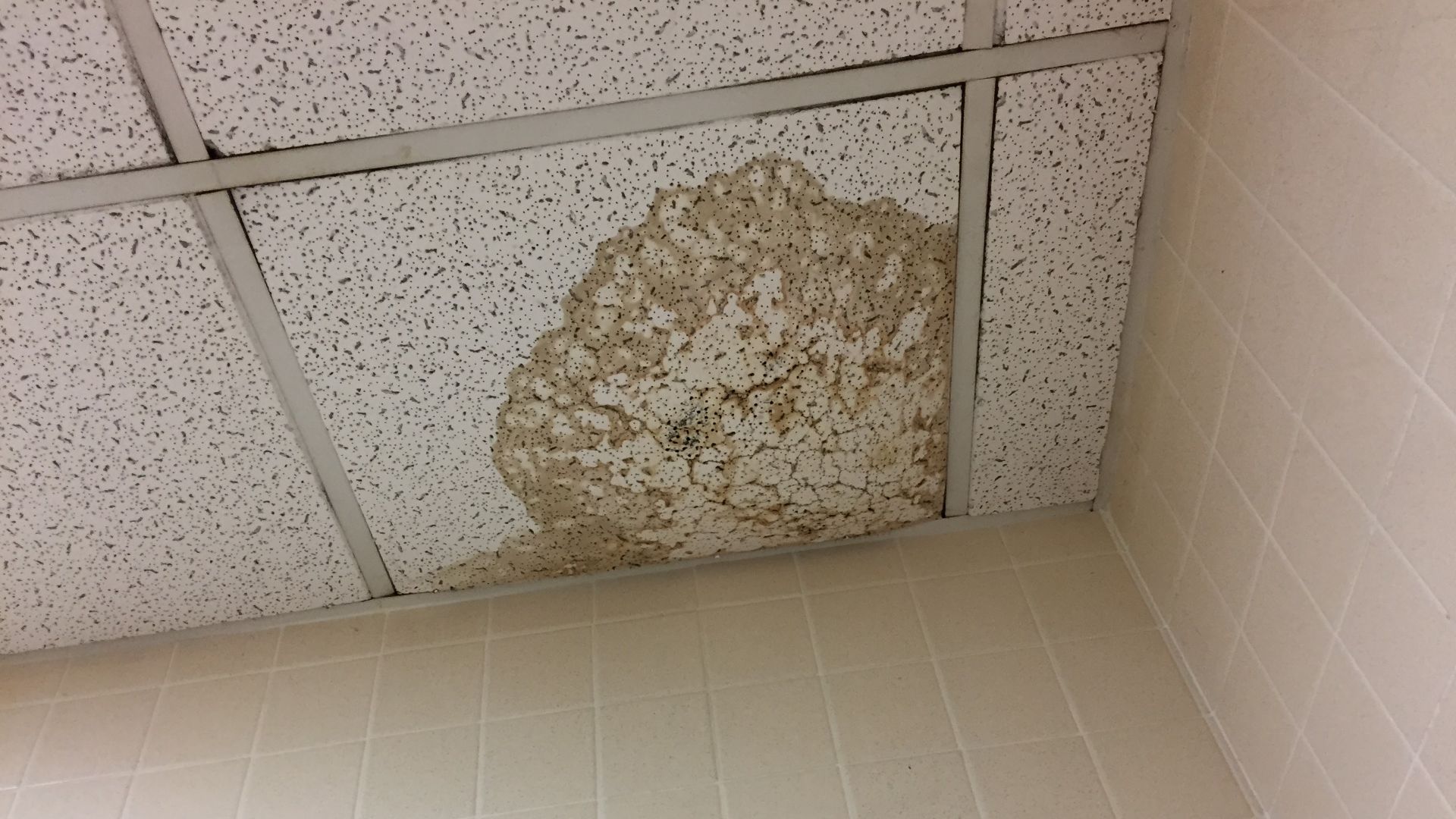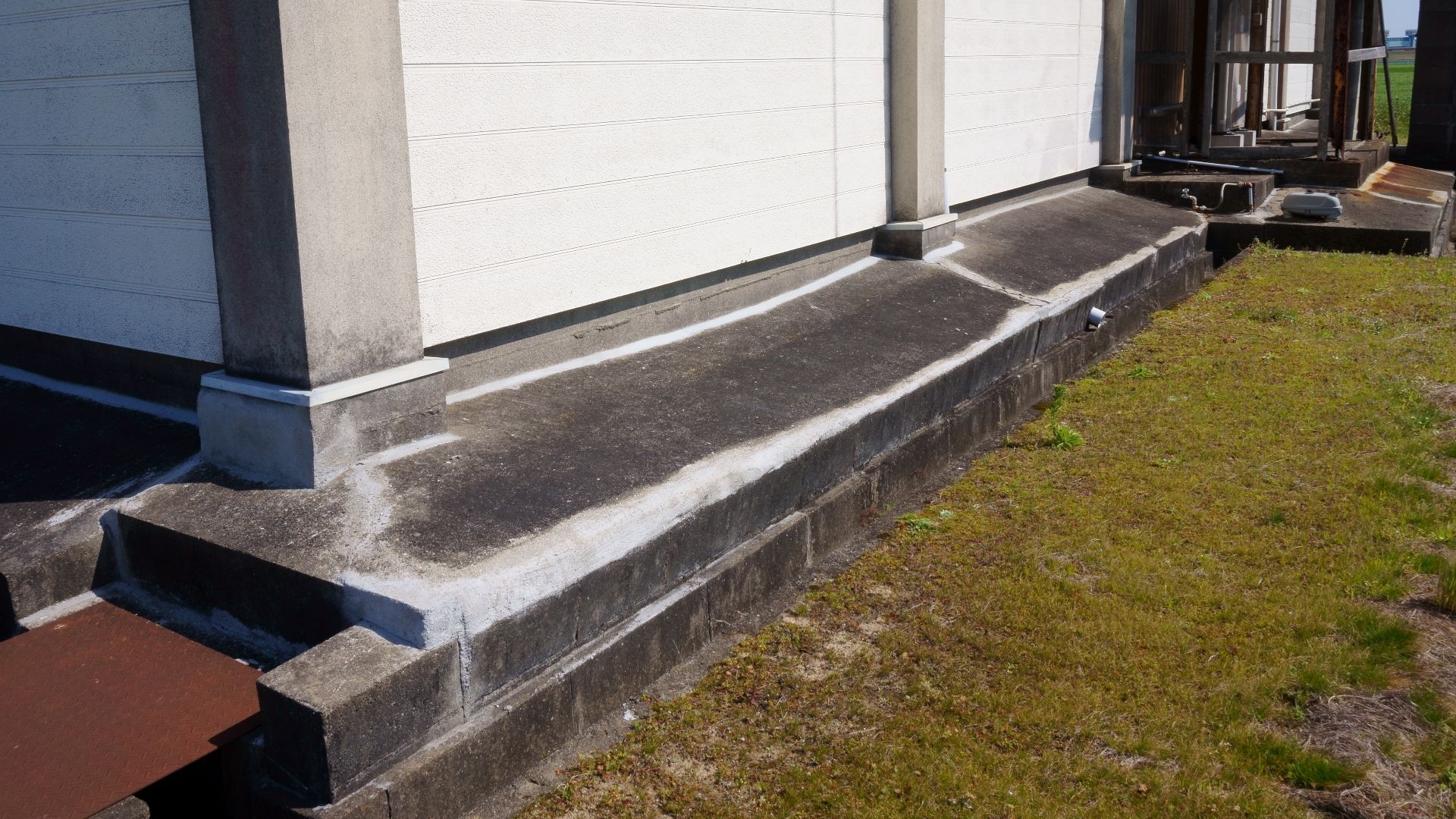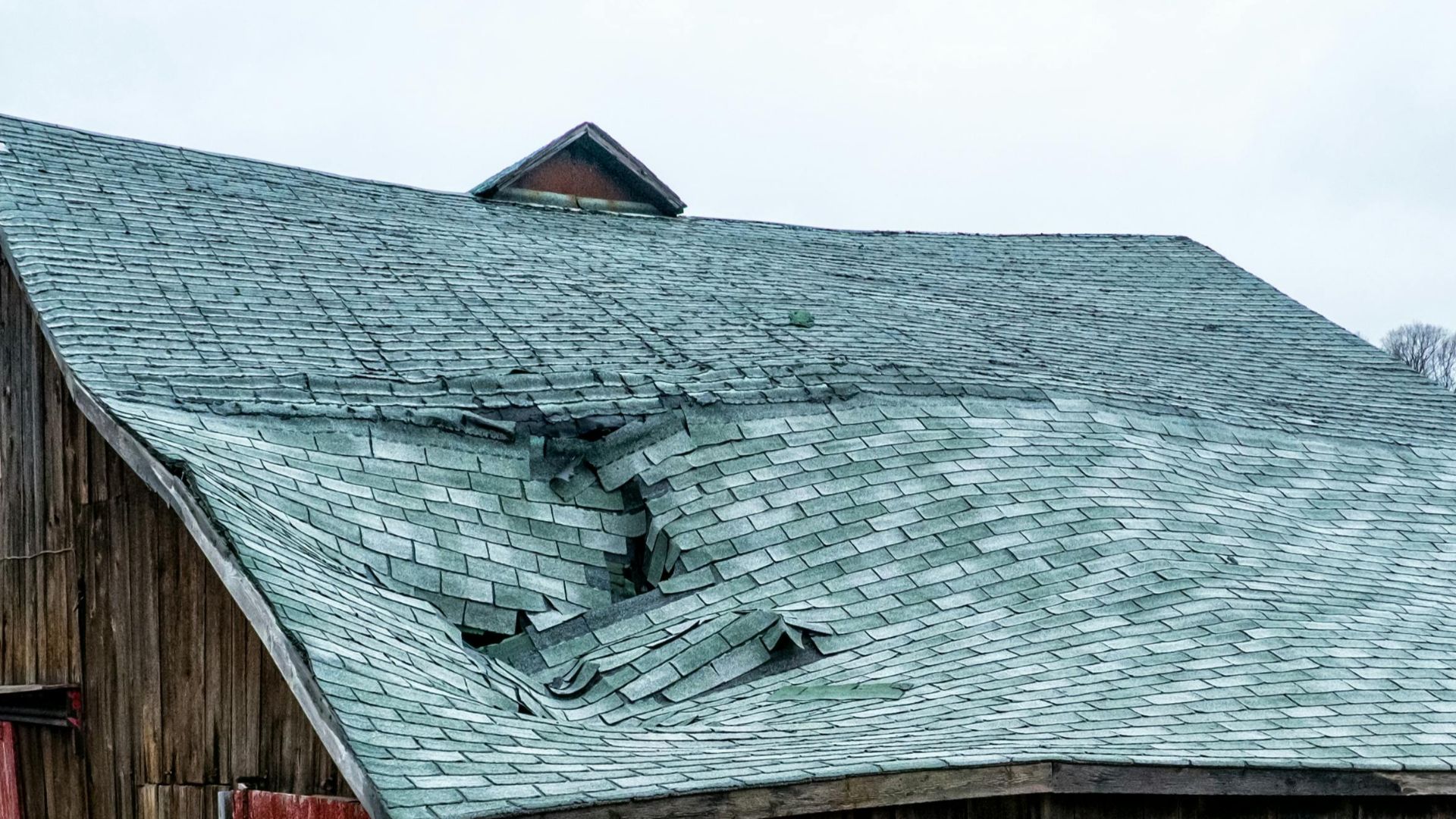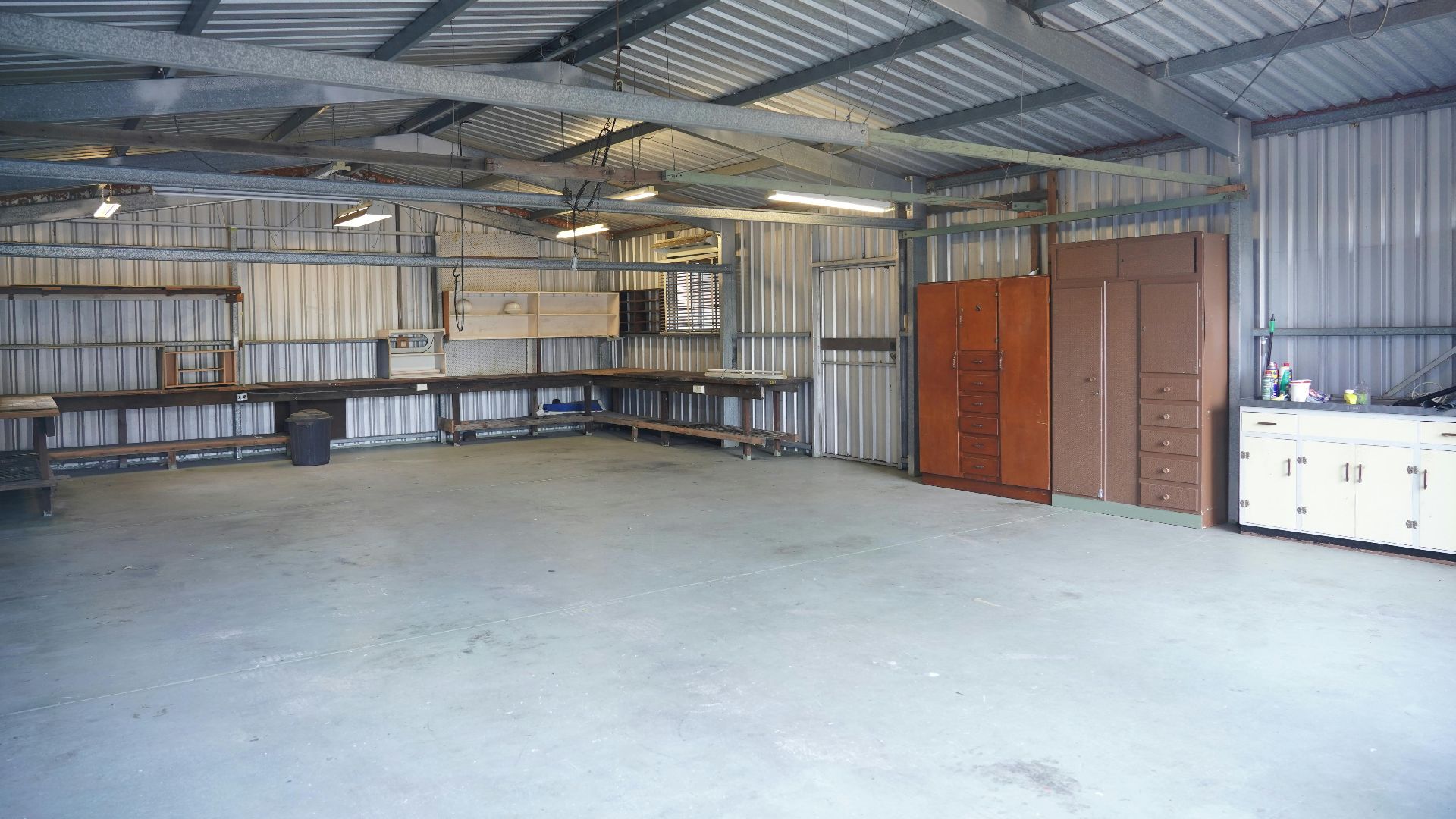Skip This Property
Home sellers have tricks up their sleeves. They know exactly how to mask problems until you've signed on the dotted line. The good news? These issues leave telltale signs if you know where to look.

Cracks In The Foundation
Those wide, jagged cracks snaking across a home's foundation aren't just cosmetic flaws—they're screaming warnings about the property's structural integrity. Foundation problems can make financing impossible and often require repairs that'll drain your savings faster than a broken pipe.
Water Stains On Ceilings Or Walls
That innocent-looking discoloration on the ceiling might be hiding a nightmare behind the drywall. Even minor water stains can conceal extensive damage lurking just out of sight. That minor blemish could signal significant rot, requiring costly repairs that weren't in your homebuying budget.
 Infrogmation, Wikimedia Commons
Infrogmation, Wikimedia Commons
Water Stains On Ceilings Or Walls (Cont.)
Water damage gives rise to the perfect breeding ground for mold, which can seriously impact your family's health and jeopardize your mortgage eligibility. Those brownish marks on walls or ceilings typically indicate leaks from the roof, plumbing, or windows.
 Atomicdragon136, Wikimedia Commons
Atomicdragon136, Wikimedia Commons
Strong Air Freshener Smell
Real estate experts know that a house smelling like "Bath and Body Works exploded" means something sinister is going on behind the scenes. Sellers strategically place plug-in air fresheners or scented candles in every room to mask unpleasant odors from mold or pet damage.
Uneven Or Sloping Floors
Sagging floors can point out serious issues with load-bearing walls that might require extensive repairs. In some homes, the unevenness becomes so pronounced that furniture wobbles noticeably or doors swing open by themselves. When you're touring a potential home, pay attention to how the floors feel underfoot.
Fresh Paint In Random Spots
People sometimes use selective painting as a quick fix to hide problems rather than addressing the underlying issues. These suspicious spots of fresh paint deserve your immediate attention. If you notice paint that doesn't match or seems newly applied in isolated areas, start asking questions.
Poor Drainage Around The House
Erosion near flower beds is revealing a potentially hazardous secret about how water moves around your future home. When water pools near the foundation rather than flowing away, you're looking at a ticking time bomb for basement leaks and structural damage.
 Helena Jankovicova Kovacova, Pexels
Helena Jankovicova Kovacova, Pexels
Poor Drainage Around The House (Cont.)
Blocked or overflowing gutters often accompany these drainage problems, creating a compound issue that threatens the home's integrity. Without proper grading that directs water away from the structure, you're buying a future headache of foundation repairs.
Mildew Smell
Trust your nose before your eyes when house hunting. That musty odor lingering in certain rooms indicates hidden mold or mildew, often growing in places you can't see, such as behind walls, under floors, or in dark basement corners.
Inconsistent Water Pressure
Ever experienced a disappointing shower? That could be something to worry about. When testing faucets throughout a home reveals inconsistent flow, you're likely discovering leaks, corroded pipes, or outdated plumbing systems. Plumbing issues can be hidden throughout a house.
Inconsistent Water Pressure (Cont.)
Beyond just making showers less enjoyable, weak water pressure can prevent appliances like dishwashers and washing machines from functioning properly. Before making an offer, always check every tap and shower as their performance shows the hidden health of systems running behind walls and under floors.
DIY Electrical Work
Dangerous doesn't always announce itself clearly. Those mismatched outlets or unusual switch placements might seem quirky until they cause a house fire. Amateur electrical work often fails to meet building codes and creates serious safety hazards that professional inspectors immediately flag.
DIY Electrical Work (Cont.)
Exposed wires and unprofessional connections hide in walls, ceilings, and junction boxes. When you notice signs of homemade electrical solutions, understand you're seeing just the tip of the hazard iceberg. The true cost appears when a licensed electrician has to rewire entire sections of the home.
Roof In Poor Condition
From the street, you can often spot one of the most expensive potential repairs. Missing shingles, visible sagging, or obvious patching on a roof aren't minor details. All of these are forecasting major expenses in your immediate future if you purchase the property.
Roof In Poor Condition (Cont.)
Apparently, a roof replacement ranks among the costliest home repairs, often running into five figures. When water breaches the roofing material, it gives rise to a cascade of interior damage, from attic insulation to ceilings and walls.
Windows That Don't Open Or Close Properly
Windows do more than just brighten up a home. They're like little messengers about what's going on behind the scenes. If they start sticking, won’t stay open, or won’t shut all the way, it could be a sign of moisture damage or structural shifting.
Windows That Don't Open Or Close Properly (Cont.)
Beyond the functional annoyance, problematic windows dramatically impact energy efficiency, sending utility bills soaring in both summer and winter. Replacement costs add up quickly. Modern, energy-efficient windows for an entire home represent a major investment that sellers often hope buyers won't factor into their offers.
Overgrown Landscaping Near The Foundation
Plants shouldn't be hugging your house. That charming ivy or those overgrown bushes pressed against the foundation create perfect conditions for moisture retention and pest infestation. The roots can even damage foundation walls over time, forming cracks and allowing water to enter.
Overgrown Landscaping Near The Foundation (Cont.)
Good landscaping should help water flow away from the building instead of letting it pool against the foundation. This might seem like just a looks issue, but it actually points to possible maintenance problems that could affect other, less obvious parts of the property.
Termite Or Pest Damage
Sometimes the smallest creatures cause the biggest problems. Termites and other wood-destroying insects tend to compromise a home's structural integrity while leaving few obvious signs for untrained eyes. Those tiny piles of sawdust or mud tubes along foundation walls are risky.
Unusual Add-Ons Or Room Conversions
That "bonus room" is sure to come with bonus problems. Awkward additions or converted spaces—like a garage turned bedroom or an enclosed porch—often lack proper permits, creating legal headaches for new owners. Without proper permits, these spaces may need to be restored to their original purpose.
Unusual Add-Ons Or Room Conversions (Cont.)
Questionable conversions frequently lack adequate insulation, ventilation, or safe exits. What looks like extra square footage represents a compliance nightmare that's difficult to finance or insure. These spaces are often known to disrupt the home's natural flow and functionality.
Low Asking Price Without Explanation
If a deal seems too good to be true, it probably is. An unusually low listing price without a clear justification means the seller hopes you'll discover only after closing. Smart buyers always ask why a property is priced significantly below comparable homes in the area.
Low Asking Price Without Explanation (Cont.)
Bargain prices frequently lead to expensive post-purchase surprises that quickly eliminate any initial savings. Sellers sometimes price properties low to create bidding wars or to offload homes with serious defects quickly. Always question suspiciously affordable listings and investigate thoroughly before assuming you've found an amazing deal.




























